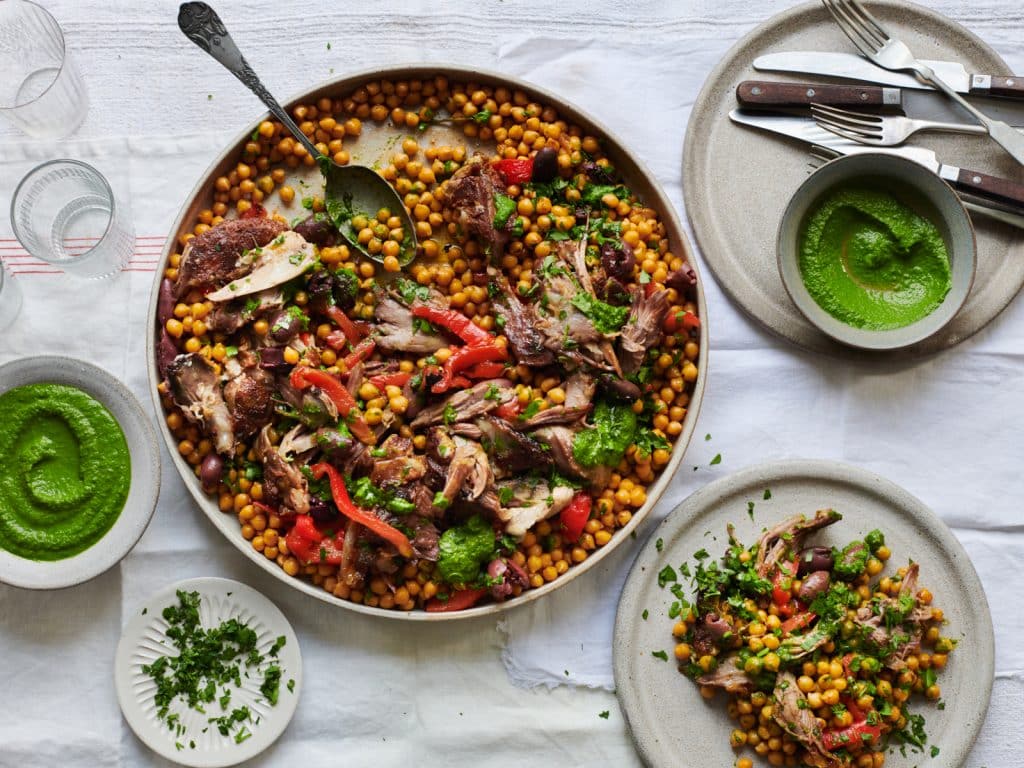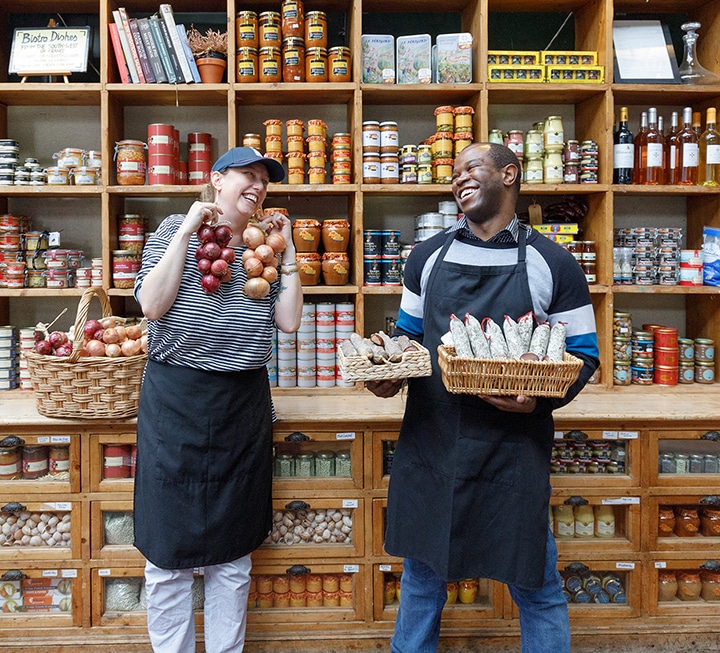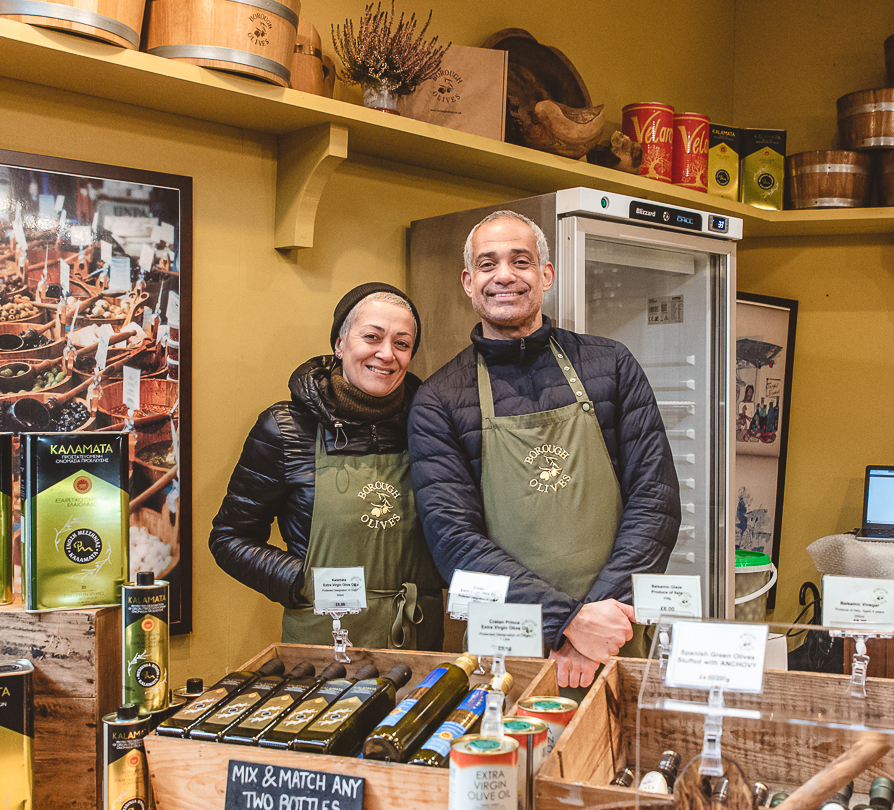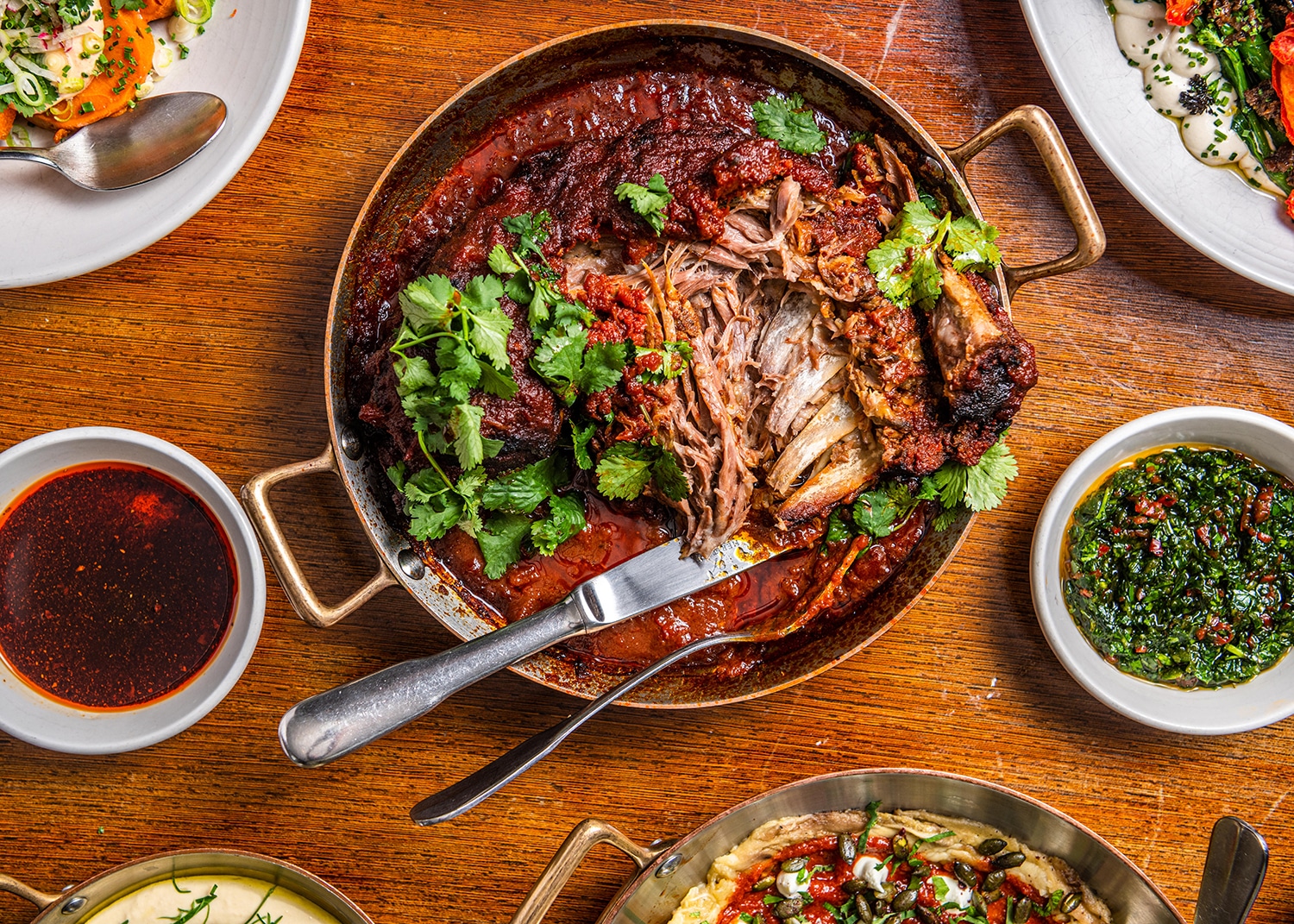Slow-roasted shoulder of lamb with beans
A flavoursome dish to feed a large gathering with minimal effort


Recipe Meta
Prep
20 mins (plus marinating & soaking)
Cook
5 hours
Serves
10
Difficulty
Medium
Ingredients
For the pulses
- 1kg dried flageolet beans, haricot beans, cannellini, chickpeas—the choice is yours
- 2 bay leaves
- 6 red peppers, roasted, skinned and sliced
- 200g black olives, preferably pitted
- 1 large bunch of parsley, chopped
For the lamb
- 8 garlic cloves, crushed with a little salt
- 5 tbsp olive oil
- Juice of 1 lemon
- 1½ tbsp ground coriander
- 1½ tbsp ground cumin
- 1½ tbsp paprika
- 100g yoghurt
- A shoulder of lamb (around 2kg will be enough meat to feed 10-12)
For the zhoug sauce
- 2 large bunches of coriander
- 1 bunch of parsley
- 6 garlic cloves
- 1 tsp ground cumin
- ½ tsp ground cardamom
- 4 green chillies (that’s up to you)
- 100ml extra virgin olive oil
- 3 tbsp red wine vinegar
Method
Soak the pulses in plenty of water overnight (they will swell to double their volume). For the lamb, mix together the marinade ingredients and rub over the lamb shoulder in a large roasting tin. Leave for a few hours, or preferably overnight.
Preheat the oven to 200C. Place the lamb in the oven for 20 mins, then turn the temperature down to 160C. Cover the lamb with a sealed tent of foil and roast for about 4-5 hours, until it will literally fall apart.
Meanwhile, drain the pulses and place in a large pan, covered by about 10cm water, and add the bay leaves. Bring the pan up to the boil for a few mins and skim off the foam that rises to the surface (not essential but it’s thought that removing the froth makes the legumes more digestible).
Now the choice is yours: simmer the pot on the hob for anything between 45 mins to 1½ hours, depending on the age/ type of pulse – or better still, pop the pan into the 160C oven at the same time as the lamb, if you can squeeze it in. The pulses are ready once soft and creamy. Season with salt.
Do set some pulses aside if you are cooking for any vegetarians or are cooking for smaller numbers – they will be a boon in the fridge for soups and side dishes later in the week.
After about 3½ hours, lift and place your lamb carefully on top of your cooked pulses. Tip all the liquid from the lamb pan into a jug and remove about ½ the fat off the top if you have too much (I still aim to have about 100ml fat along with all the deliciously aromatic juices).
Tip the juices over the pulses, re-cover the lamb with foil and cook for a further 30 mins to 1½ hours (until the lamb literally falls away from the bone).
To serve, remove the lamb carefully from the pan, place on a board and cover with the foil again.
Pour the pulses with their juices into a large serving dish and stir in the peppers, olives and most of the parsley. Check the seasoning.
Now ‘pull’ the meat into bite-sized pieces using two forks, throwing out any large bits of fat and the bones. Lay the meat over the pulses on the serving dish and sprinkle with the remaining parsley, 2-3 tsp salt and a bit of black pepper.
For the sauce, whizz everything in a blender until smooth. Taste and add more oil, vinegar, salt or chilli until well balanced. Serve on the side at the table.
ALTERNATIVE For a vegetarian option, halve aubergines and roast in the oven until soft with a couple of spoons of the marinade. Serve with the pulses, peppers, olives and parsley, along with lashings of extra virgin olive oil and lemon juice. Delicious with the zhoug too.
Image: issy Croker





